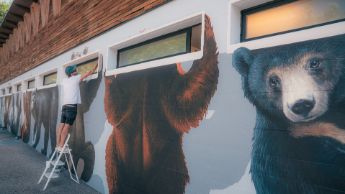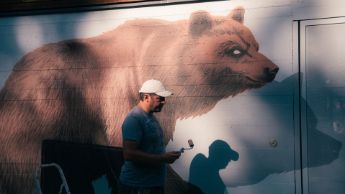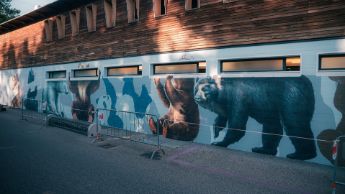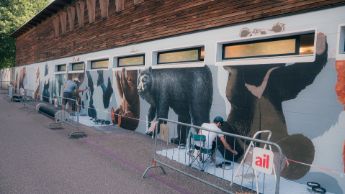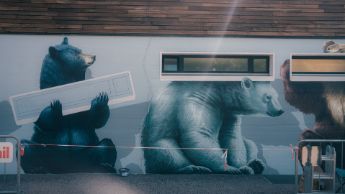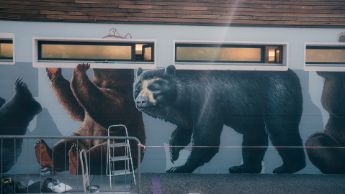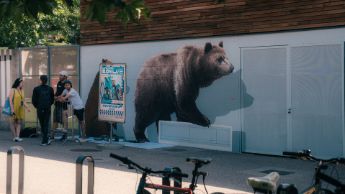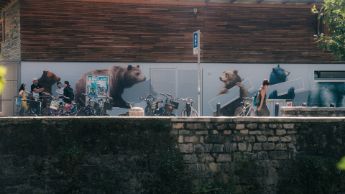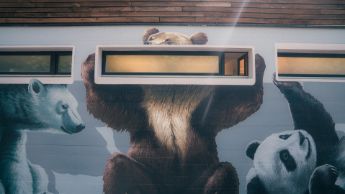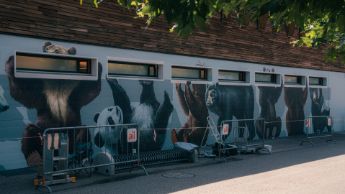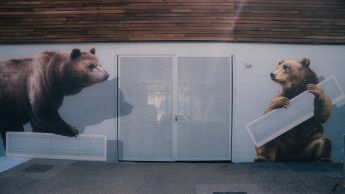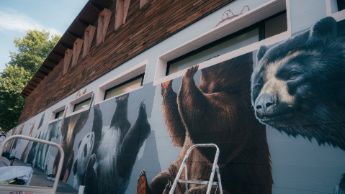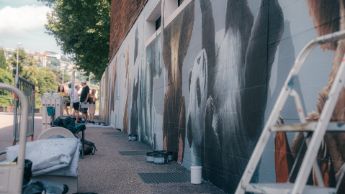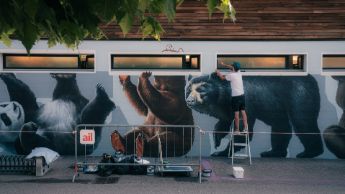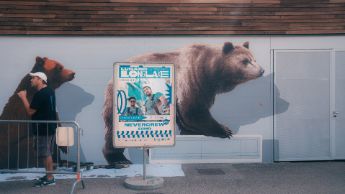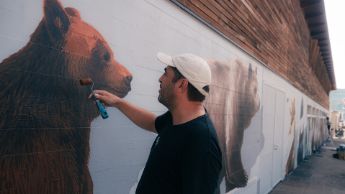Echo: The Nevercrew Come Home
“Echo” has taken shape at the Foce, an intervention that weaves together public art, environmental reflection, and urban identity.
18 July 2025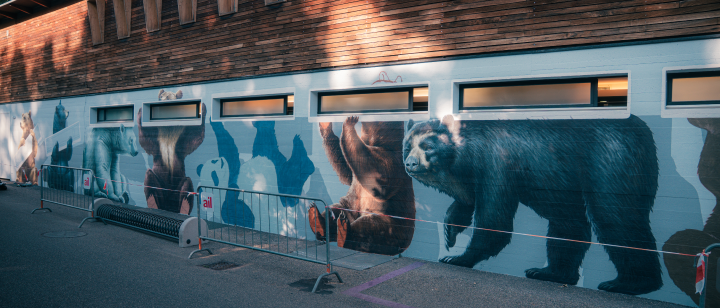
At the Foce in Lugano (the mouth of the Cassarate River), Echo has taken shape, the new site-specific work by Nevercrew. This intervention weaves together public art, environmental reflection and urban identity, turning the Lido façade into a visual story about the relationship between human beings, nature and place. We asked the artistic duo to tell us about the project and the meaning of this homecoming.
Can you tell us about the work “Echo” you are creating at the Foce? How does it fit into Lugano’s landscape and urban identity? Is there a dialogue between the work and the specific site where you are creating it?
“Echo” was born from an analysis of the place, of the architectural features of the structure on which we are working and of its position in both the urban and natural context.
We wanted to establish a direct dialogue with the Lido façade, exploiting its horizontality and the rhythmic sequence of its windows (and of the elements on the wall to the left and the wooden section on the first floor) to build a visual narrative that integrates with the space, turning its dominant features into active parts of the composition and concept.
The piece focuses on the relationship between human beings and the environment and on the idea of a shared global balance, recurring themes in our work. The main subject is the bear, here shown in twelve individuals of different species, representing coexistence between humans and nature on a territorial level.
The twelve figures interact symbolically with the existing windows, which we are turning into screens, narrative surfaces that light up (“switch on”) thanks to the interior lights of the Lido.
Conceptually, this operation evokes the coexistence of different ecosystems, the link between local and global, a unified vision of nature and balance in which everyone plays an active role, while also hinting at a detached, non-empathetic gaze shaped by anthropocentrism in an era dominated by digital visual communication.
Is there an aspect of the city that particularly inspires you, or that inspired you for this project?
In this case we started precisely from the relationship between the city and its natural landscape, from the intersection of built space and the water that surrounds it.
Lugano has a strong visual and practical identity linked to the lake and, at our site, also to the river and the pools. For this reason, water is the element that shapes the narrative of our work—both as a thread running through the images we will apply in the window-screens and as a conceptual reference in the “symbolic river” the bears create by merging their aquatic habitats.
What does it mean for you to create a work in Lugano again? You are from the region—does carrying out an artistic project right here, at home, have a special meaning? Does anything change compared with other contexts?
There is definitely a different emotion. Working in these places inevitably confronts us with personal memories and experiences that are part of our formation, but at the same time it lets us look at the place with greater awareness and critical distance.
It is an opportunity to create the “technical” detachment needed to establish a new, deeper dialogue with the place and with those who live it daily, as well as to interact—through our artistic language—with the community we belong to, which rarely happens given the itinerant nature of our work.
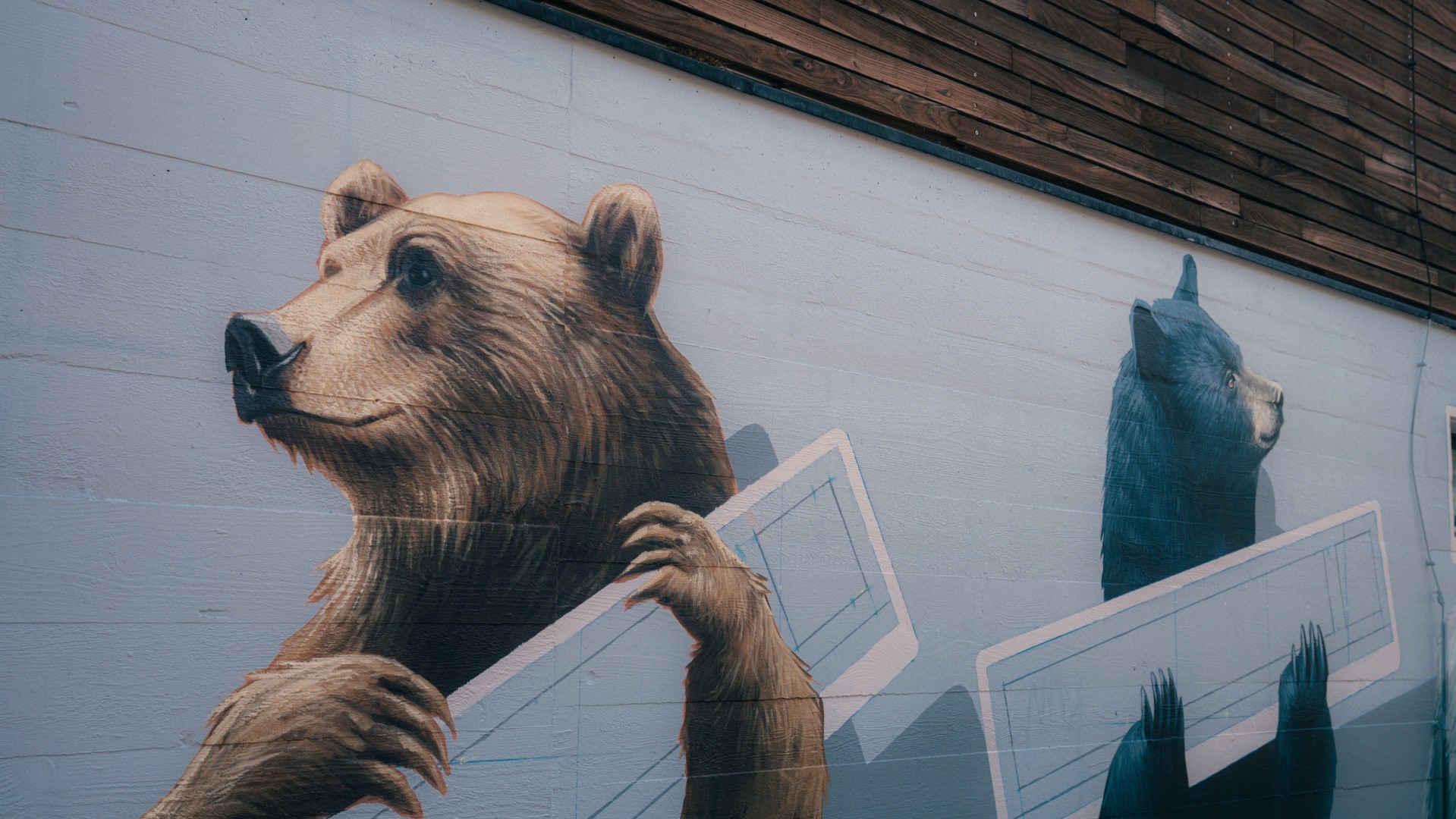
Specific animals often recur in your works: how do you choose which ones to depict and in what context? Is there a reason you always use certain subjects?
The animals we use almost always carry symbolic meaning for us or, in some compositions, acquire it precisely through the use we make of them.
They are figures that allow us to reflect on the interdependence of living beings, environment and habitats, on the delicate balance that links natural systems, and on how humans fit into—or, conversely, detach from—them.
In “Echo” we chose to depict bears of different species to link ecosystems and evoke a global vision. Each bear has its own specificity, yet is part of a shared composition and action.
Where does your graphic style come from, and how did this focus on the interaction between human beings and the environment develop?
Our path began in the mid-1990s, amid graffiti, illustration and various visual experiments.
We have always had a preference for a narrative, direct and as interactive approach as possible, and this led us to develop a strong interest in composition and in dialogue between pictorial elements and surrounding space. Above all, it pushed us to think of our subjects as elements present in and related to the place, not as mere painted images.
We therefore worked a great deal on realism, optical illusion, trompe-l’œil, anamorphosis, reflection and many other techniques useful to our narrative purpose, eventually synthesising them into our current language.
Since our youth we have had a keen interest in politics and, more generally, in human dynamics and in the balances of the systems we belong to.
Over time we felt the need to address broader issues, to reflect more on human systems, on their social implications and on the relationship with nature—a relationship that for us epitomises the peculiarities of today’s systems.
From this perspective, observing the natural world led us into constant reflection on these themes and on the possibilities of a more conscious existence. Our graphic style is the result of this research: a visual language that combines realism, conceptual construction and a direct dialogue with space.
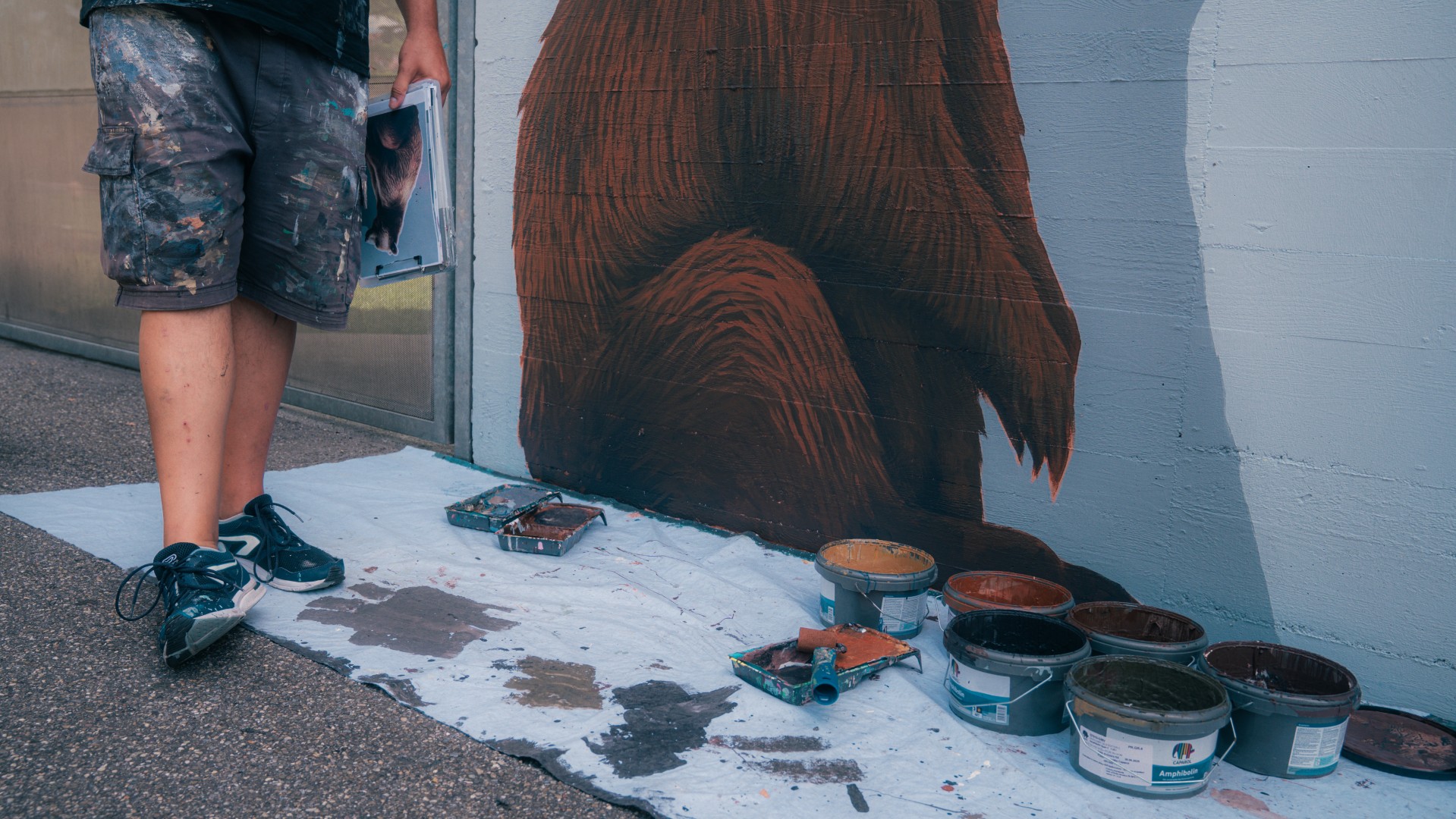
How much do the wall, the space or the neighbourhood influence the choice of subjects or the design of the work?
A great deal. Every intervention starts from an analysis of the context: of the wall, its shape, its position in the urban space, its history, the flow of people, and so on.
The work is built in relation to the place and could not exist elsewhere in the same form. We always seek a balance between visual language and the specificities of the context, working on different levels of reading, from immediate impact to deeper reflection.
How do you divide the work? Working as a duo, how does your creative process function?
Our process is completely shared. We discuss every idea, every visual and conceptual choice. Each of us brings our own sensibility, but what we create is always the result of continuous exchange founded on almost thirty years of artistic work as a duo.
Even in the execution phase we are essentially interchangeable, dividing tasks only for practicality depending on the situation.
The project is part of Arte Urbana Lugano (AUL), the platform for artistic initiatives run by the City of Lugano that comes to life each year during the days of the LongLake Festival.
Subscribe to the City of Lugano's WhatsApp channel
Subscribe and share with your contacts the link to the WhatsApp channel of the City of Lugano, where you can receive public utility news, alerts, and updates on city initiatives for citizens and businesses: www.lugano.ch/whatsapp
The English version of this page was created with the aid of automatic translation tools and may contain errors and omissions.
The original version is the page in Italian.
